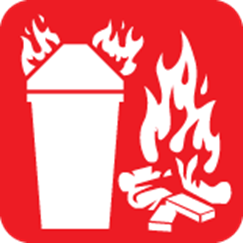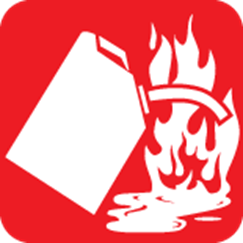#10 THE FIRE TRIANGLE
What is fire?
- Chemical reaction between oxygen in the atmosphere and some sort of fuel gives Fire.
- The fire triangle is Oxygen, fuel, and heat.
- Combustion happens when fuel reacts with oxygen to release heat energy
- Fuel+O2→CO2+H2O+heatenergyOxygen(Combustion products)
- Combustion that results in a flame is very fast and is called burning.

The Fire Triangle
This is The Fire Triangle. Actually, it’s a tetrahedron, because there are four elements that must be present for a fire to exist:
- Oxygen to sustain combustion
- Heat to raise the material to its ignition temperature
- Fuel to support the combustion
- Chemical reaction between the other three elements
- Remove any one of the four elements to extinguish the fire.
The concept of Fire Protection is based upon keeping these four elements separate.
Types of Fires
Not all fires are the same. Per NFPA 10, burning may be classified into one or more of the following fire classes and your fire protection specialist will select the right fire extinguisher size and agent for the hazard.
Class A Fires
Fires in ordinary combustibles, such as wood, paper, cloth, rubber and many plastics.
Class B Fires
Fires in flammable liquids—such as gasoline, petroleum greases, tars, oils, oil-based paints, solvents and alcohols—or flammable gases, propane and butane.
DOES NOT include fires involving cooking oils and grease.
Class C Fires
Fires involving energized electrical equipment, such as computers, servers, motors, transformers and appliances. Remove the power and a Class C fire becomes one of the other classes of fire.
Class D Fires
Fires in combustible metals, such as magnesium, titanium, zirconium, sodium, lithium and potassium.
Class K Fires
Fires in cooking oils and greases, such as animal and vegetable fats.
Some types of fire extinguishing agents can be used on more than one class of fire. Others have warnings where it would be dangerous for the operator to use on a particular fire extinguishing agent.







Comments
Post a Comment